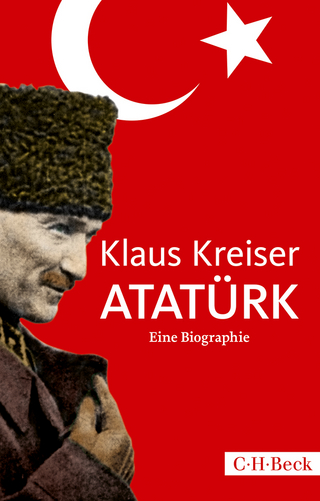
The Renaissance of Shi'i Islam
I.B. Tauris (Verlag)
978-0-7556-4944-0 (ISBN)
I.B. Tauris in association with the Institute of Ismaili Studies
The renaissance of Shi’i Islam began in the 9th/15th century when the Ismailis experienced the Anjudan revival and Twelver Shi’i traditions were also renewed. This renaissance gained further strength when the Safavids succeeded in establishing a state in the early decades of the 10th/16th century, making Ithna’ashari Shi’i Islam their official religion.
The chapters in this open access book represent the most recent scholarship on the intellectual and spiritual life of the age and discuss what prepared the ground for its appearance as well as its achievements. Although the political and artistic developments of the Safavid era of the 10th-12th/16th-18th centuries have been extensively studied, the complexities of the different groups, movements and strands of thought in the renaissance of Shi’i Islam still remain largely unexplored. The major themes that characterised the Shi’i renaissance are explored, including: popular reactions to messianic movements; the development of legal theories and concepts; the investigation of theological and philosophical problems, above all by the ‘School of Isfahan’; Shi’i-Sufi interactions and intra-Shi'i relations; the collection of Shi’i hadith and its application in Shi’i exegesis; and the interplay between political considerations and religious beliefs.
The eBook editions of this book are available open access under a CC BY-NC-ND 4.0 licence on bloomsburycollections.com. Open access was funded by The Institute of Ismaili Studies.
Farhad Daftary is Director of the Institute of Ismaili Studies, UK and Head of its Department of Academic Research and Publications. He is a consulting editor of the Encyclopaedia Iranica, co-editor of the Encyclopaedia Islamica, and has written and edited 25 books in the field of Ismaili studies, including The Isma’ili’s: Their History and Doctrines (1990; 2nd ed., 2007); The Assassin Legends (1994); A History of Shi’i Islam (2013); and The Ismaili Imams: A Biographical History (2021). Farhad Daftary’s books have been translated into Arabic, Persian, Turkish, Urdu, Gujarati and numerous European languages. Janis Esots was an Associate Professor at the Department of Asian Studies, University of Latvia and a Research Associate at The Institute of Ismaili Studies (2013–2021). His research focused on Ismaili thought and the philosophical school of Isfahan (Mulla Sadra, Mir Damad and Rajab ‘Ali Tabrizi). He was the managing editor of Encyclopaedia Islamica and the editor of the Islamic Philosophy Yearbook Ishraq. Prior to his death in 2021, his monograph, Patterns of Wisdom in Safavid Iran: The Philosophical School of Isfahan and the Gnostic of Shiraz was published by the Institute of Ismaili Studies (2021).
Preface, Farhad Daftary, Institute of Ismaili Studies, UK and Janis Esots, Institute of Ismaili Studies, UK
1. The Shi’i Milieu of Post-Mongol Iran, Farhad Daftary, Institute of Ismaili Studies, UK
Part One: Ismailism in the Context of Shi'i-Sufi Coalescence
2. Prose and Poetry: A Glance at Post-Alamut Nizari Ismaili Literature in Iran, Seyyid Jalal Badakhchani, Institute of Ismaili Studies, UK
3. The Scent of the Scarlet Pimpernels: Ismaili Leaders of the 11th/17th Century, Shafique N. Virani, University of Toronto, Canada
4. Ismaili Doctrines in a Late Safavid Author: Quotations from the Risala al-Jami’a in Qutb al-Din Ashkivari’s Mahbub al-Qulub, Daniel De Smet, KU Leuven, Belgium
Part Two: Shi'i Messianism and Lettrism
5. The Resurrection of Shah Isma’il in Alevi-Bektashi Literature, Amelia Gallagher, Niagara University, US
6. Hurufism after Fadl Allah’s Execution: Revisiting Sahifat al-Istikhlas, Fatih Usluer, Ankara University, Turkey
7. Nuqtavis, Safavids and Shi'ism in the 9th–11th/15th–17th Centuries, Orkhan Mir-Kasimov, The Institute of Ismaili Studies, UK
Part Three: Hadith and Fiqh
8. Majlisi the Second, Ambiguous Architect of the Shi’i Revival in Safavid Iran, Mohammad Ali Amir-Moezzi, The Ecole Pratique des Hautes Etudes, France
9. The Akhbari Movement and Literary Production in Safavid Iran , Devin J. Stewart, Emory University, US
10. Postclassical Legal Commentaries: The Elaboration of Tradition in Safavid Twelver Shi'ism, Robert Gleave, University of Exeter, UK
11. A View from the Periphery: The Ijaza as Polemic in Early 10th/16th-century Twelver Shi'ism, Andrew J. Newman, The University of Edinburgh, UK
Part Four: Philosophy, Theology and Intellectual History
12. Mir Damad’s ‘Wisdom of the Right Side’ (al-hikma al-yamaniyya), Janis Esots, The Institute of Ismaili Studies, UK
13. Some Aspects of the Reception of Suhrawardi’s Philosophy by Mulla Sadra, Christian Jambet, Independent scholar, France
14. A Symphonia of Shi'ism, Philosophy and Sufism from the Late Safavid Period: Qutb al-Din Ashkivari’s Epistle on the Imaginal World (written in 1077/1667), Mathieu Terrier, The Institute of Ismaili Studies, UK
15. Late Antique Intellectualism in Medieval Islam: The Shiraz Circle and the Revival of Ancient and Islamic Knowledge, Ahab Bdaiwi, Leiden University, The Netherlands
16. Shah Tahmasp’s View of Nature, as Reflected in his Shahnama, Sheila R. Canby, Metropolitan Museum of Art, US
Selected Bibliography
| Erscheinungsdatum | 25.08.2022 |
|---|---|
| Reihe/Serie | Shi'i Heritage Series |
| Sprache | englisch |
| Maße | 156 x 234 mm |
| Themenwelt | Geisteswissenschaften ► Geschichte ► Regional- / Ländergeschichte |
| Geisteswissenschaften ► Philosophie ► Östliche Philosophie | |
| Sozialwissenschaften ► Soziologie ► Spezielle Soziologien | |
| ISBN-10 | 0-7556-4944-3 / 0755649443 |
| ISBN-13 | 978-0-7556-4944-0 / 9780755649440 |
| Zustand | Neuware |
| Haben Sie eine Frage zum Produkt? |
aus dem Bereich


